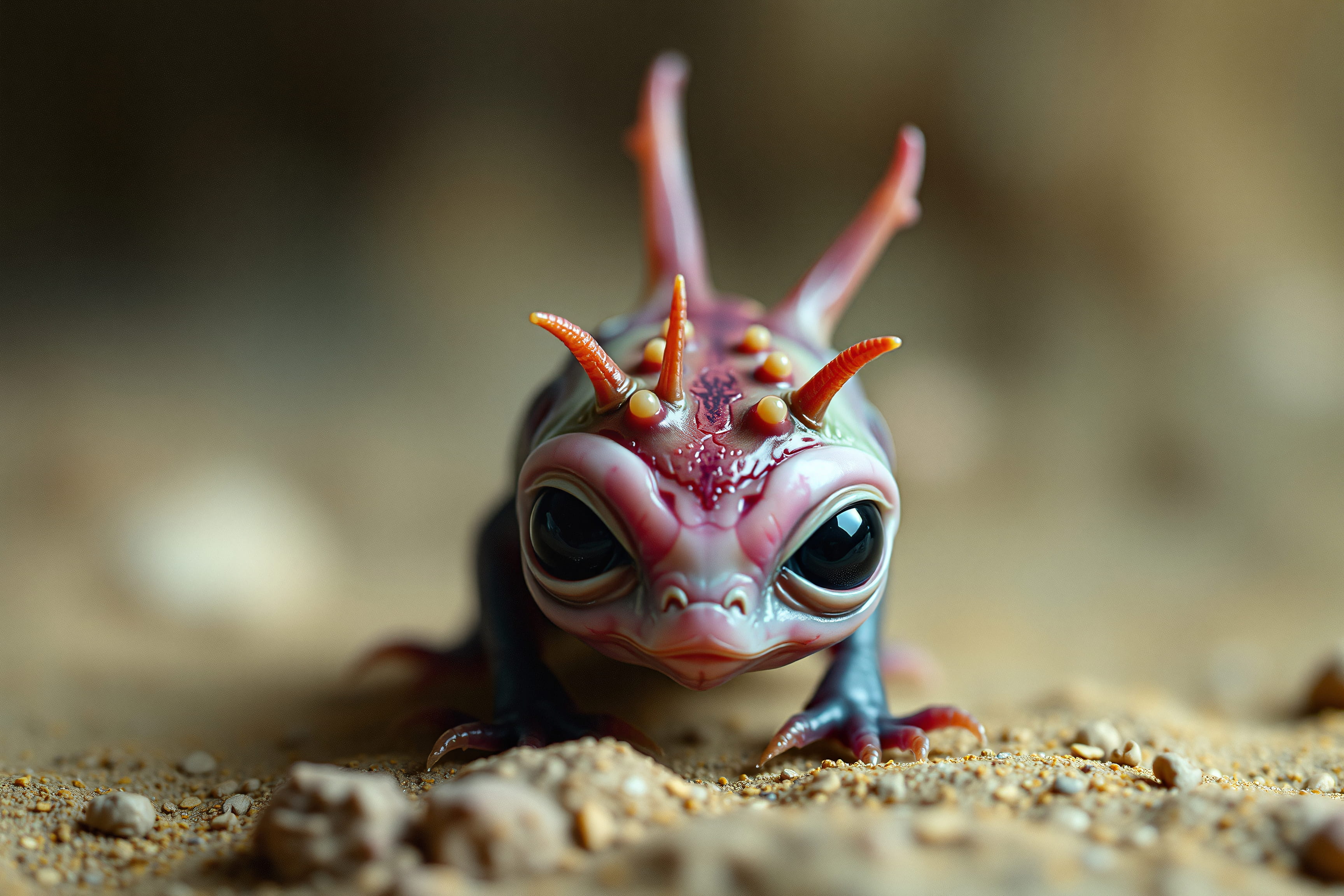
Mentem sapiens

The entity depicted in the image appears to be a member of an advanced extraterrestrial species, potentially belonging to the genus Mentem sapiens, colloquially referred to as "Wisdom Beings." This classification is based on the being's enlarged cranial structure, suggesting a highly developed brain capable of complex thought, abstract reasoning, and possibly advanced telepathic communication.
Morphological Characteristics:
Cranial Structure: The being possesses an elongated, dome-shaped cranium with pronounced ridges, indicating an expansion of cerebral capacity. The lack of hair and visible vascular patterns on the head suggest a high degree of neural activity, possibly linked to enhanced cognitive abilities.
Eyes: The large, almond-shaped eyes are likely adapted for low-light environments, suggesting a native habitat with limited sunlight or a nocturnal lifestyle. The absence of visible sclera and the deep black coloration of the eyes may indicate a structure that maximizes light absorption, akin to a cat’s eyes on Earth, enhancing the ability to see in dim conditions.
Skin: The skin has a smooth, slightly ridged texture, which could function as a thermoregulatory feature, assisting in the maintenance of internal body temperature in varying climates. The reddish hue may be due to a high concentration of hemocyanin or a similar oxygen-carrying molecule, which is efficient in environments with low oxygen levels.
Neck and Posture: The elongated neck and erect posture suggest a species that values or requires a wide range of head movement, possibly for better sensory awareness or communication.
Behavioral and Environmental Adaptations:
Clothing: The being is draped in what appears to be simple yet functional garments. This indicates a cultural development where modesty or protection from environmental elements is valued. The fabric may also serve symbolic or communicative purposes within the species' societal structures.
Communication: The lack of visible vocal structures may imply a reliance on telepathy or a form of non-verbal communication, such as the use of electromagnetic fields, to convey complex ideas and emotions. The being’s calm and contemplative expression suggests a peaceful disposition or a society that prioritizes intellectual pursuits.
Hypothetical Habitat:
- The being’s physical traits suggest adaptation to a planet with a thinner atmosphere and reduced sunlight, possibly orbiting a red dwarf star or existing within subterranean environments. The evolutionary pressure in such an environment would favor a species with advanced cognitive functions and sensory adaptations for survival.
Conclusion:
This entity, belonging to the Mentem sapiens genus, represents a species that has likely developed advanced cognitive and communicative abilities, thriving in an environment that challenges physical and mental resilience. Its physiological adaptations hint at a rich cultural and intellectual life, possibly centered around knowledge acquisition and preservation. Further study of such beings could yield insights into the evolutionary paths of intelligence across the universe.